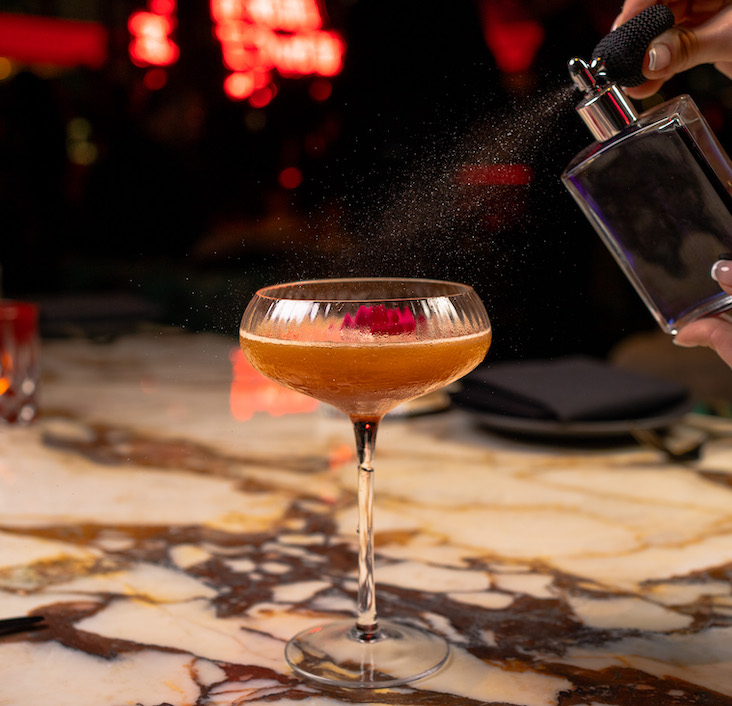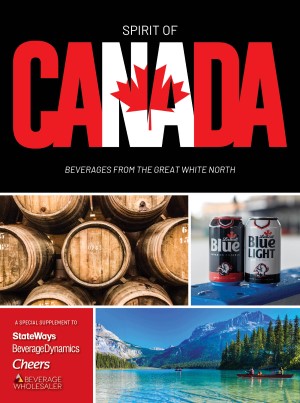GETTING THE WORD OUT
Promoting Your
Beverage Program Can Pay Dividends
BY ELLIE VAN SAVAGE
Today, many restaurant operators commit energy and money to their beverage programs, only to see few gains in sales and profits. In most cases, a little publicity could help.
Successful restaurant publicists take a pro-active approach to promoting restaurant beverage programs. They can help communicate an operation’s great ideas such as weekly wine clubs or cocktail making classes, seasonal tie-ins, events or holidays to a wider audience.
Getting the operator’s message out in the market and in the press is the first objective. Creating “unusual cocktails” in the lounges “brings a high likelihood that it will be picked up in the press,” says Andrew Freeman, vp of public relations and strategic partnerships for Kimpton Restaurants and Hotels, based in San Francisco. “In early September, for example, at our bar Encore in Chicago, we introduced the Caprese cocktail. It’s a take-off on the caprese appetizer,” he says. The drink contains pepper vodka and tomato water, and is garnished with tomato and a mozzarella ball.
Since food and beverage are so closely linked, it’s not surprising that some of the best restaurant promotions involve both elements. For instance, Ponzu in San Francisco re-invented the time-honored happy hour with specially priced dim sum and drinks to attract new customers. Its AtoZen Happy Hour allows guests to try pieces of dim sum for 50 cents together with Asian-inspired cocktails starting at $3, or a saki-sampler (five 2-oz. tastes for $10).
Publicists can help operators keep on top of national beverage trends, or sometimes create them. Wildwood Restaurant & Bar in Portland, OR, recently created a bourbon-based cocktail called Ginger and MaryAnn. “The restaurant had been thinking about adding ginger to these cocktails. After we did, we spotted an article in the New York Times on ginger cocktails,” says Lisa Donoughe, principal of LAD Communications in Portland, OR, an independent firm which represents Wildwood.
LOCATION, LOCATION
When working with clients, Donoughe “thinks about where the restaurant is located and what can be done with it that’s different. Everything I do is editorially driven.” She recommends that operators develop drink menus that are “local and relevant,” and suggests they look for tie-ins with local farmer’s markets, for instance. “I might do an apple/pear menu, for instance, or offer a Calvados pear promotion at the bar this relates to what people will be seeing when they go to the farmer’s market.”
Charlie Palmer Steak’s location on Capitol Hill in Washington, D.C., led its wine master to create an all-American wine list with entries from every state. Joan Hisaoka, president of Hisaoka Public Relations in Washington, who represents Palmer, says, “We have created special menus and drink promotions around the upcoming political election. In Washington, anything political is huge and we have used this with much success.”
Luncheon menus at Charlie Steak salute George W. Bush and John Kerry, and feature some of their favorite foods and prized local dishes from their native states. In addition, wines from Massachusetts and Texas (at $6 per glass) are also being promoted.
Hisaoka, who also handles p.r. for the lounges of Kimpton Hotels in the Washington area, has been promoting special drinks for both political parties at the Helix Lounge in the Hotel Helix. The Helix offers the Pink Elephant for Republicans and the Disco Donkey for Democrats, both available through November 2.
Along with location, a restaurant with an unusual concept or design can make for memorable promotions. For example, this winter a promotion of Iron Horse wines (from Sonoma County, CA), is being planned to tie in with equestrian artwork at Palette in Washington, D.C. “This restaurant is a miniature museum; it has revolving art from the Americas. I relate it to the food and wine list,” says Heather Freeman of Washington, D.C.-based Heather Freeman Public Relations.
Harry Denton, front, toasts a party at Harry Denton’s Starlight Room in San Francisco.
A reasonably priced wine list itself can be cause for promotion, says Freeman. “Everyone had been doing standard wine lists, but in the early ’90s, I saw a big change. There was a push to have a ’40 wines under $40′ type of program.” Freeman says that one of her clients, the Sanderling in Duck, NC, found success with a wine list. The hotel also hosts a popular Wine Club Mondays promotion, where guests can taste five different wines for $20.
SAVVY BARTENDERS
Some operators can get promotion mileage from drink menus created by well-known mixologists. For example, nationally-known barman Dale DeGroff recently put together the cocktail menu for the Silver Leaf Tavern, the restaurant at the 70 Park Avenue Hotel (formerly the Park Avenue Doral) in New York City, a Kimpton Hotel. His creations include the Kama Sutra, a vodka-based drink which includes Demerara syrup, a dash of grenadine and fresh skinned ginger, garnished with a kaffir lime leaf.
DeGroff has also held hands-on training seminars with bartenders at several other Kimpton Hotels. “In addition, we had events open to the public where Dale made a few of his signature cocktails. We had a minimum of 80 to 100 people at these events,” says Kimpton’s Freeman.
But operators can encourage their own head bartender to design unusual beverage programs that attract attention, and they can be trained to handle the press as well, publicists say. “The potential is there for bartenders to have the same notoriety as chefs,” says Donoughe.
Freeman agrees, and says the cocktail making classes offered at Harry Denton’s Starlight Room at the Sir Francis Drake Hotel in San Francisco give bartenders a chance to show their stuff. “These are around happy hour time, and the public and the press loves them,” he says.
ON-LINE NEWSLETTERS POPULAR
In getting the message out, publicists are increasingly using on-line newsletters because of their reach. For example, Restaurant Associates’ newsletter, “Dine Out New York,” is distributed monthly to more than 100,000 subscribers. Each newsletter shows a monthly calendar, highlighting promotions and events at the company’s various concepts.
“The newsletter lets people know what’s happening. For instance, we provide all the food and beverage services for the U.S. Open. We also offer five tribute cocktails for tennis at the Open but these same drinks are also available at the Rink Bar in Rockefeller Center, and people love being at that bar,” says Kay Nelson, director of p.r. for Restaurant Associates. “Our newsletter also mentions Mojito Bar & Restaurant, our pan-Latin and Cuban concept within Arthur Ashe Stadium. We love to cross-promote,” she says. –EVS
HIRING A PUBLICIST
Operators may wonder if a publicist can work for them, but may be unsure of what to look for. In hiring, experience is key, publicists say. “The restaurant business is relationship driven. Look for someone who already has relationships with writers,” says Lisa Donoughe of LAD Communications. She suggests contacting food editors at newspapers and magazines and ask them which p.r. firms they work well with.
Jenn Galdes of Grapevine Public Relations in Chicago, says it’s important to discuss what you want with a prospective publicist. “Your publicist should be able to work on your goals, while bringing new opportunities to the table. Do you want mostly local press, or national? Are you interested in events, both in-house and off-site?”
After hiring a publicist, what kind of service can an operator expect? “The publicist should explain what kind of exposure she’s giving, and what kind of press clips she has,” says Heather Freeman of Washington, DC’s Heather Freeman Public Relations. “But it’s only fair to give the publicist at least four months before judging the service,” she says.
Publicists also create press kits if the client doesn’t have one, or assist in improving the existing press kit. “A publicist should build a press kit containing a chef’s bio, fact sheet, copy of the wine and Martini list. And all of my clients’ press kits are up on my web-site I’ve been doing it that way for five years,” says Freeman.
Having available ready-to-use artwork is also important. “We have jpg’s available on the Internet. This is the digital age, and editors will call requesting camera-ready art and recipes. Publicists have to have these ready to go,” Donoughe stresses.




